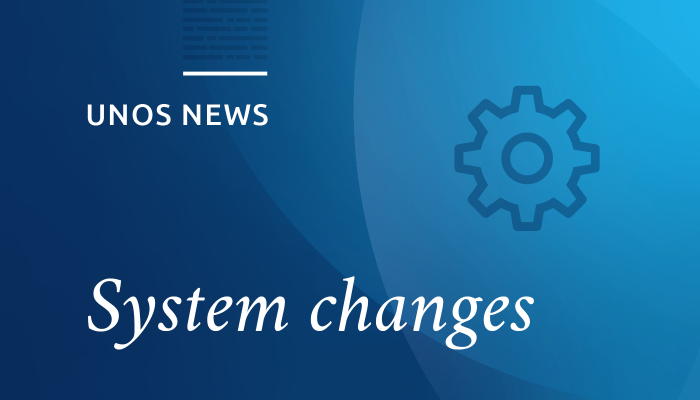- Primary OPO Administrative Directors, Primary OPO Data Coordinators
- OPO Administrators, Data Coordinators, Organ Placement Coordinators and OPO/TXC Acceptance Call Consultants, Organ Procurement Adms/Mgrs
- Intestine, kidney and pancreas transplant Primary Program Administrators
- All UNetSM users
- Please share this notice with anyone in your organization who would benefit from this information.
Implementation date: March 15, 2021
At-a-glance
Changes are now in effect regarding how electronic organ offer limits in DonorNet® are applied for intestine, pancreas, kidney-pancreas and kidney matches in their respective distance-based allocation systems. Organ procurement organizations (OPOs) should review their settings to determine if updates are needed.
Background
Because DSA is no longer used as the first unit of allocation for any organ, candidates at the top of the match runs may include potential recipients who are beyond the DSA border. Find more background information here.
OPOs may see increases in the maximum number of potential recipients eligible to be notified simultaneously. This change affords OPOs more flexibility to make informed decisions about how to offer organs using their own defined best practices.
Summary of changes
Intestine allocation became distance-based on Feb. 4, 2020. Effective March 15, intestine matches use “local” organ offer limits when sending offers to candidates who are:
- within the DSA, or
- within 500 NM, or
- listed as Status 1
Effective March 15, when kidney, pancreas and kidney-pancreas allocation became distance-based:
- Pancreas/Kidney-Pancreas matches use “local” organ offer limits when sending offers to candidates who are:
- within the DSA, or
- within 250 NM, or
- 0 ABDR mismatch with the donor and have a CPRA > = 80%
- Kidney matches use “local” organ offer limits when sending offers to candidates who:
- Are within the DSA, or
- Are within 250 NM, or
- Fall into classification:
- 1 through 39 on allocation sequence A (KDPI 0 -20% or enbloc)**
- 1 through 29 on allocation sequence B (KDPI 21-34%)**
- 1 through 28 on allocation sequence C (KDPI 35-85%)**
- 1 through 22 on allocation sequence D (KDPI > 85%)**
**Refer to this policy document for a full list of these kidney classifications that went into effect March 15.
These changes to OPO electronic organ offer limits for intestine, kidney, pancreas and kidney-pancreas bring the standards for OPO notification limits in DonorNet into a consistent framework for all organ types. Corresponding changes have already been implemented for liver, heart, lung, and heart-lung match runs following the implementation of distance-based allocations for those organs.
These changes were developed in response to community feedback. An Organ Procurement and Transplantation Network workgroup that included donation and transplant members with experience in all organ types collaborated to develop these changes. Maintaining the use of DSA as part of local notification limits, in addition to distance and classifications, ensures minimal disruption in allocation practices. OPOs must still offer according to the match run, in the order of the match run, in line with OPTN allocation policies.
What you need to do
OPOs should review their current “local” organ offer notification limit settings in DonorNet to determine if updates are necessary. It is recommended that OPOs communicate with intestine, kidney-pancreas, and kidney transplant programs that fall under the new definition of local offers to develop appropriate, efficient offering processes.
Additional resources
Find professional education on UNOS Connect:
- QLT102D Notification Limits for Distance-based Allocation
DonorNet online help documentation will be updated so that OPOs will have access to the information about how local limits are used for matches for all organ types.
Questions?
If you have questions relating to implementation, contact UNOS Customer Service at [email protected], or call 800-978-4334 from 8 am to 7 pm EST.
The Organ Center is available around the clock and can be reached at 800-292-9537.

